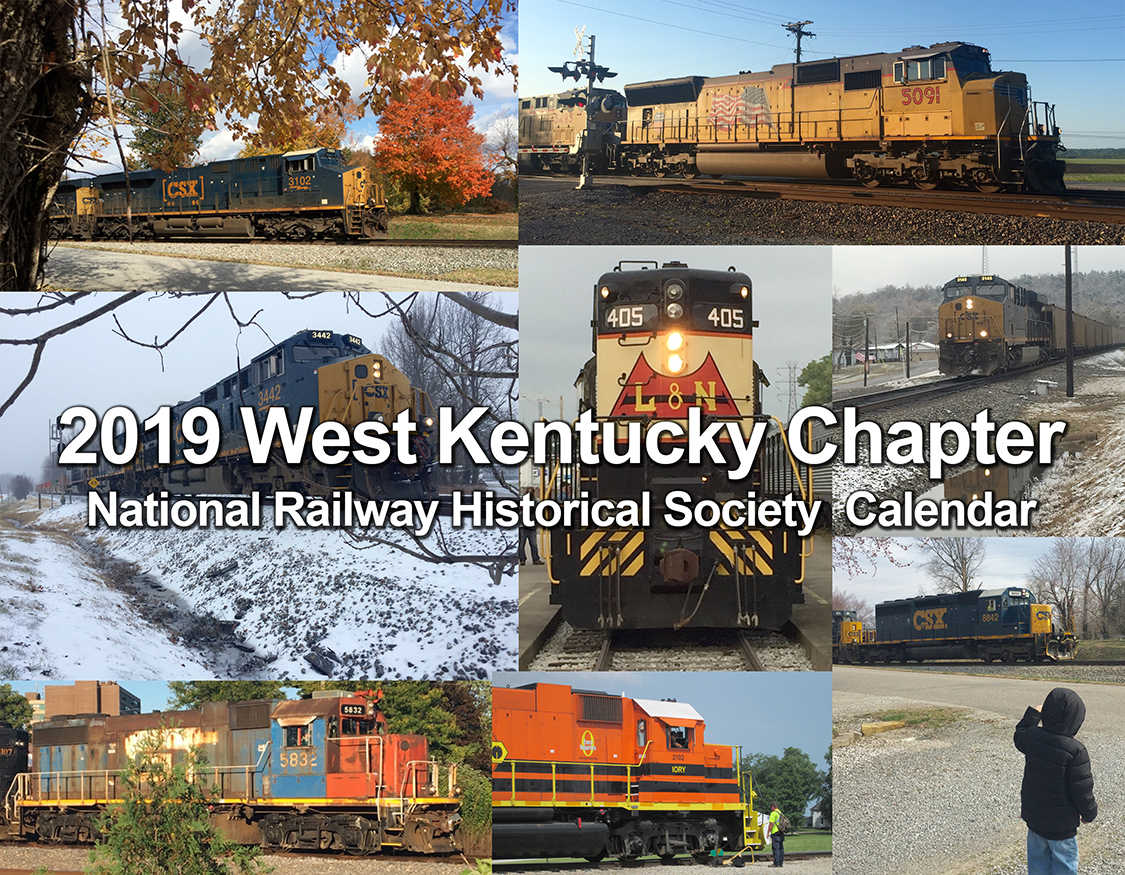Year: 2018
Our Chapter’s 2019 Calendar is now available online for purchase. It contains the winning photos from our membership from our photo contests this year. Follow the link to purchase one and support our chapter! They are $14.00 each and just in time for Christmas! You may purchase copies here: http://www.lulu.com/…/2019-w…/calendar/product-23880274.html
October 13, 2018 – From Today’s railfan event at Hopkinsville. We had I’d say between 10-15 people show up. Only saw 2 trains as the flooding down south has things backed up. Jim Pearson
Keith Kittenger and his grandson Tanner wait for a train trackside at Hopkinsville, Ky during the chapters railfan outing.
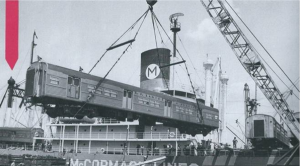 The shiny new Budd-built commuter cars are being loaded aboard a ship destined to Brazil. Brazilian railroads have both broad-gauge and standard-gauge. These cars appear to be standard, meaning 4 foot – 8-1/2 inches between the rails. In 1957 Brazil had the eighth-longest rail transport network in the world.
The shiny new Budd-built commuter cars are being loaded aboard a ship destined to Brazil. Brazilian railroads have both broad-gauge and standard-gauge. These cars appear to be standard, meaning 4 foot – 8-1/2 inches between the rails. In 1957 Brazil had the eighth-longest rail transport network in the world.
The Budd Company produced a wide variety of passenger equipment including the popular dome cars that AMTRAK retired. Personally, I liked to be able to see forward, over the top of the train as it careened across the country, even after dark.
Why the arrow, you ask.? The arrow is pointing to the rear mast. Large ships of the 20th Century were built with the pilot house and creature comforts, amidships. Most had two masts forward and a single astern. Notice the upper portion of the single mast astern is blackened. This was typical, as was the forward masts and bow of ocean-going ships painted white with a large band from the most forward point back to the first step along the gunwales, (the top edge of the side of a boat).
The reason for the blackened rear mast and the bright white forward was to provide a vivid image from afar during daylight hours. It’s a big ocean out there, and your eyes can play tricks on you. It’s extremely important for the helmsman to know precisely the attitude of any nearby traffic. From the bridge of your ship when you could see the white bow and super-structure, you knew the far-off ship was facing you. In hours of darkness red, green navigation lights provide the visual.
Large ships built today usually place the pilot house and all amenities positioned at the stern. Some of the reasons: from the stern the Captain has a better feel of control, particularly when docking, and the propulsion source is near the propeller, eliminating a lengthy drive shaft and housing that could affect the lading capacity. Photographer unknown
From Gary O. Ostlund
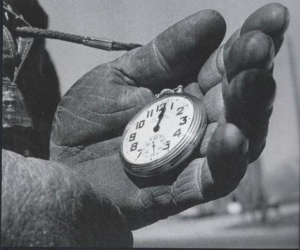 Today we all begin “Standard Time.” Actually, it started early this morning at 2AM when we were all supposed get up and move the clock back one-hour, gaining an extra hour of sleep. To my knowledge, no one got up at 2AM.
Today we all begin “Standard Time.” Actually, it started early this morning at 2AM when we were all supposed get up and move the clock back one-hour, gaining an extra hour of sleep. To my knowledge, no one got up at 2AM.
Railroads have always functioned by the clock. All operating personnel, enginemen, conductors, brakemen, dispatchers, maintenance of way folks, and others all need to function precisely, on the same time. Over the years railroads spent a fortune assuring every pocket watch worn by a railroader was accurate, to the second. Watch repairmen were under contract to provide this service. Rail management despised Daylight Savings Time as it meant changing their passenger schedules, among other things. (Only farmers were less happy with DST)
Railroaders timepieces, timetable, and special instructions kept trains from running into each other. This was in the days prior to the computer screen now in view of the engineer and conductor as they glide along their way. They can now communicate in real time with the dispatcher, coordinating meets, and change strategies in order to expedite their cargo.
- S. Railroads did the country a great service in 1883 when, on their own, no governmental involvement, established our four time-zones. Fifty-Six standards of time were folded into the four zones we set time by today. Only minor tweaking has altered the original map, mostly to enhance economic zones. Photo by the late Richard Steinheimer.
Gary O. Ostlund
Blair Terry – sitting in the engineer’s seat of the NC&StL locomotive 576. This was Nashville Steam Preservation Society’s annual fall open house on October 27, 2018, in Centennial Park. Nashville Steam Preservation Society has reached their goal of half a million dollars and will be moving the locomotive from Centennial Park to the Tennessee Central Railroad Museum facilities for the final restoration process.
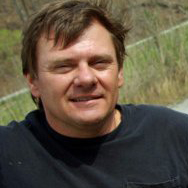
Greetings fellow National Railway Historical Society, Western Kentucky Chapter members and welcome to November! It would seem winter came on without a fall. As did summer without a spring. Personally, I like the cooler weather. I have more time for things other than mowing, work etc.!
As you know, November brings about election time. Not on a national level mind you, but rather on our Chapter level! The November meeting will showcase the election process for the 2019 officers of our Chapter. No new nominations were made in October, however, we will call for nominations from the floor during the November meeting. If you know of someone whom you would like as an officer, nominate them. One can even nominate them self if so desired. So show up and be heard, and be counted.
Last month’s meeting was quite informative as one can see from the minutes. Refreshments were spot on and Bill Farrell’s program was excellent. I enjoy when a member presents a program of personal interest and with a personal touch. I especially enjoyed the model of the train station that still stands in Matawan, New Jersey. Ironically, I was searching the web a few days after the program for more information on the station when I ran across photographs of the model itself while still in the hands of the builder before being sent to Bill! A great program indeed Bill.
Don’t forget the Christmas party on December 1 which is a Saturday and will be held at Steve Miller’s house in Hopkinsville. Meet time is 3 PM, eat time is 4 PM with trains in the basement following. Also, the Christmas show officially begins the day after on the second as a set up and trial run day. Bill Farrell will have more information and remind us of the schedule. And let’s not forget breakfast with Santa! Again Bill will have more information meeting night.
A little FYI for the members, I now have an official Innovation Station badge! Meaning, I can open the building without having to have the locks programmed by the administration. Of course this is not something we will abuse. Any events at Innovation Station other than our monthly meetings will have to be cleared with management team prior to scheduling. With this knowledge, be advised, we will have to enter through the basement door. The upstairs doors will not remain unlocked during our meeting. Likewise, should any unforeseen event prevent me from arriving on meeting night, we will not have access to the building! Hopefully this will not happen.
Once again meeting night will also be election night. Make this your Chapter by casting a vote. Bring a friend and come prepared to be amazed! Well, at least entertained with like-minded individuals. See you there. Ricky
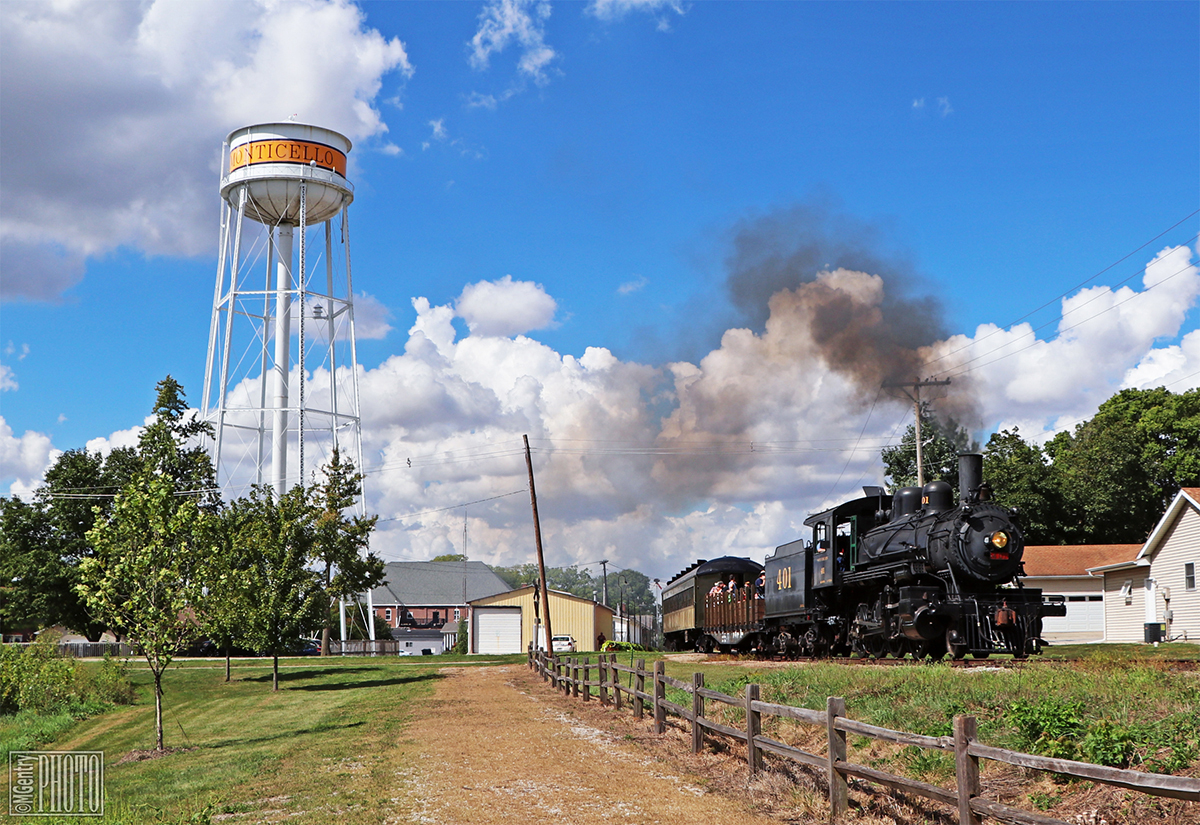
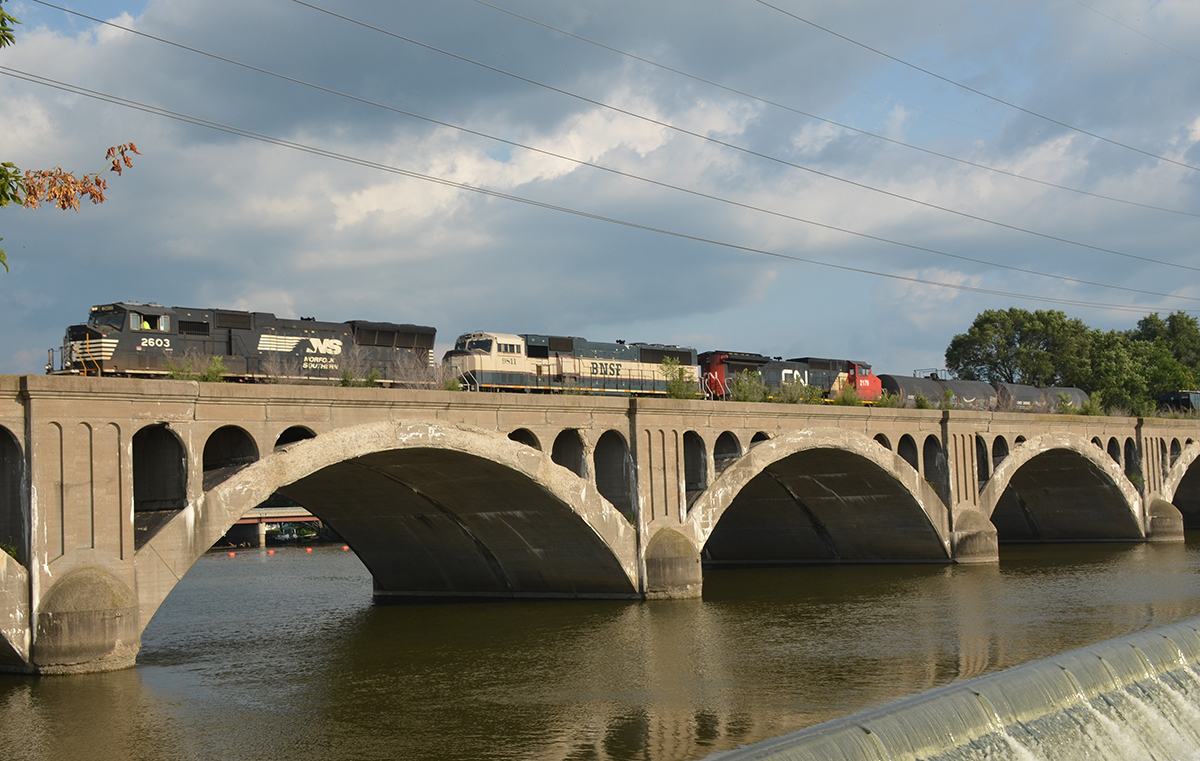
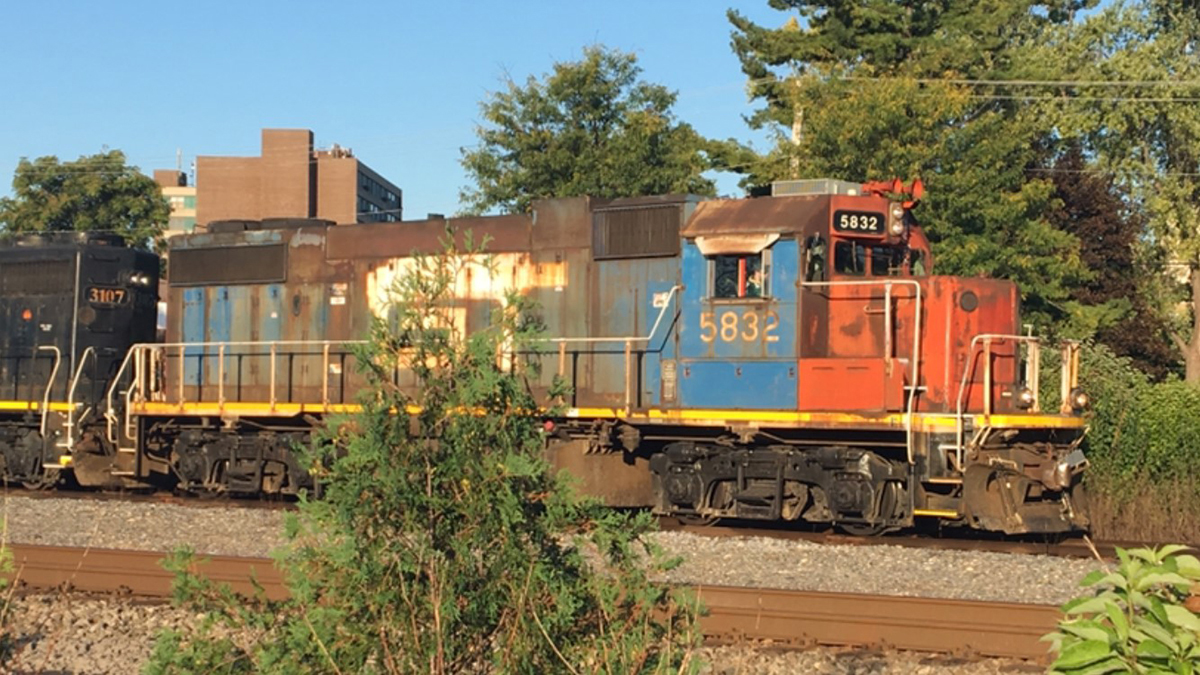
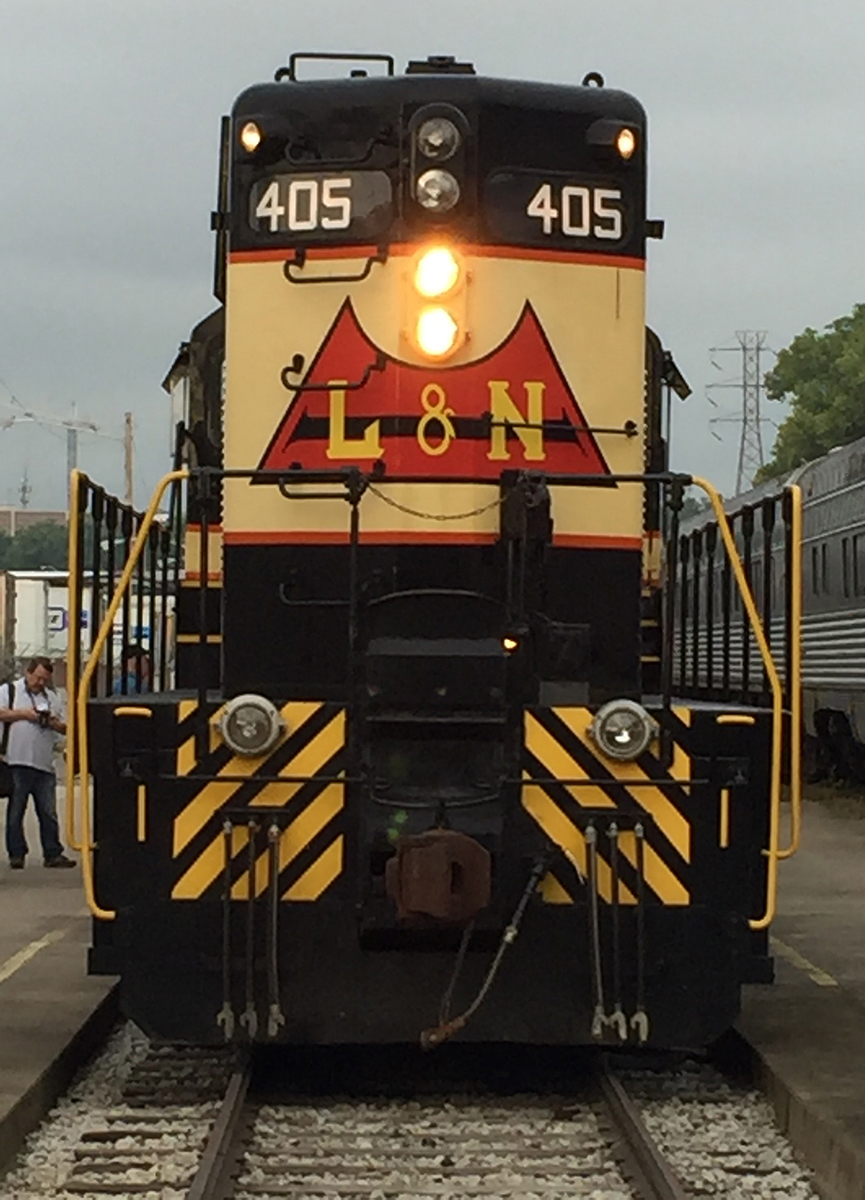

Hello again National Railway Historical Society, Western Kentucky Chapter members, and welcome to October! The first week of October feels more like August. But rest assured, we will make up for it! Cool weather is on the way.
We will have many things to discuss this month relating to upcoming events. Our annual Christmas Show, Breakfast with Santa and of course our own Christmas dinner will be some of those topics. Also, we will make our first call for nominees for officers as our election will be held in November. Your attendance to these meetings and events is paramount. We need everyone’s collective energy to make things work.
As for elections and first call for nominees, everyone is eligible to hold an office. We have the offices of President, Vice President, Secretary, Treasurer and Chapter Representative. If you would like to hold an office, nominate yourself and don’t be bashful.
Our annual fall picnic in Crofton was a good one. Several members enjoyed camaraderie and the passage of several trains. Bill Farrell along with Mrs. Farrell and others contributed to the food and much fun was had by those in attendance. This is one of our signature events and one enjoyed by many.
Jim Pearson should have a report on the recent photo contest. Hopefully Jim had more to choose from then everyone shot of the Union Pacific locomotive at Crofton!
Steve’s program last month was a DVD from his collection featuring passenger trains of the 60s. A lot of good shots and action of an era long gone. Big thanks to Steve.
So members, if you can make it to the meeting, rest a sure that you will be entertained. With new members coming on and cool weather, we always seem to enjoy our interests even more this time of year. I hope to see you there.
Although it’s not a railroad-related photograph, I thought it interesting. On an unusually foggy morning I arrived at the “bull pen” where several Hopkins County buses await their “engineers” to pull them out of their stalls for the morning run. I’m fortunate to be one of those engineers (my avocation) and function as a substitute almost every morning and one or two afternoons a week. If you know of anyone who might fit this part-time vocation well, please let me know. Bill Thomas, editor.

